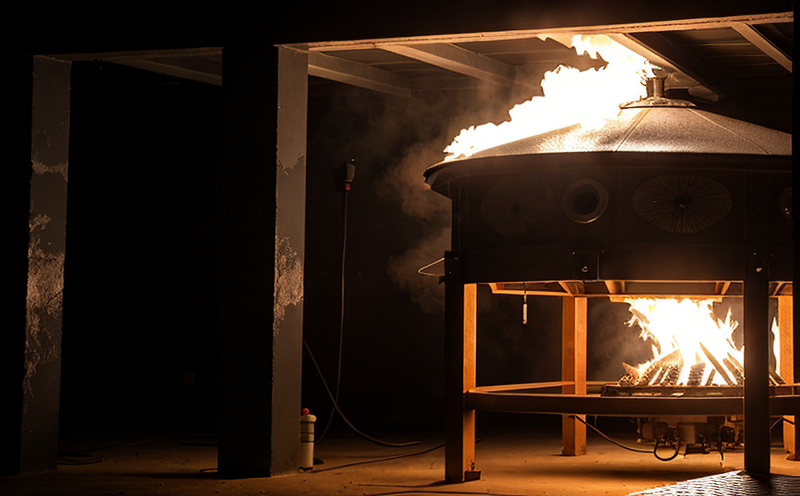Control damper inspection
In HVAC and ventilation systems, control dampers play a critical role in managing airflow, temperature, and humidity levels. These devices are essential components of building automation systems designed to optimize energy consumption, maintain comfort, and ensure indoor air quality. Control dampers can be motorized or manual, but they all serve the same fundamental purpose: to regulate airflow within ductwork by opening or closing.
The integrity of control dampers is paramount for the efficient functioning of HVAC and ventilation systems. Over time, these components may experience wear and tear due to constant operation, environmental factors like dust accumulation, or improper installation. Regular inspection ensures that any issues are detected early, preventing potential failures that could lead to costly repairs or operational disruptions.
Control damper inspection is a crucial maintenance task that involves evaluating the physical condition of the damper blades, shafts, and actuators. This process typically includes visual inspections, functional checks, and performance testing to assess the damper’s ability to operate smoothly and accurately according to its design specifications. Proper calibration ensures precise control over airflow distribution within the system.
During a detailed inspection, technicians use specialized tools such as laser distance meters for measuring blade clearances, torque wrenches for checking actuator tension, and air flow meters for assessing performance metrics like static pressure drop across the damper. These measurements are compared against established standards to determine compliance with industry best practices.
The primary objective of control damper inspection is not only to identify current problems but also to predict future issues by understanding wear patterns and potential stress points in the system. By implementing a proactive maintenance schedule, facility managers can extend the lifespan of their HVAC and ventilation infrastructure while minimizing downtime associated with unexpected failures.
In summary, regular inspections of control dampers are vital for maintaining optimal performance and ensuring long-term reliability within HVAC and ventilation systems. Through meticulous examination techniques combined with adherence to recognized standards like ASHRAE guidelines or ISO/IEC 17025 laboratory accreditation, facilities can achieve superior air quality management and energy efficiency.
Why It Matters
The importance of control damper inspection cannot be overstated when considering the broader implications for HVAC and ventilation systems. Properly functioning control dampers contribute significantly to overall system performance by facilitating accurate airflow regulation, which directly impacts energy consumption rates and operational costs.
- Energy Efficiency: By ensuring that air moves efficiently through ductwork without unnecessary resistance or leaks, control damper inspections help reduce the load on HVAC equipment. This leads to lower electricity usage and reduced carbon footprint.
- Comfort Levels: Accurate airflow control is essential for maintaining consistent temperature and humidity levels throughout a building, enhancing occupant satisfaction and productivity.
- Safety Standards Compliance: Regular inspections ensure adherence to safety regulations set forth by authorities such as OSHA or local government agencies. Non-compliance can result in fines and penalties affecting business operations negatively.
- Predictive Maintenance: Early detection of potential issues allows for planned maintenance activities, reducing the risk of sudden breakdowns that could disrupt daily operations.
A well-maintained HVAC system with properly functioning control dampers contributes to a healthier indoor environment by minimizing particulate matter and other contaminants from entering occupied spaces. This is particularly important in healthcare facilities or educational institutions where maintaining high air quality standards is critical for public health.
Benefits
- Enhanced Efficiency: Precise control over airflow improves energy efficiency and reduces operational costs.
- Better Indoor Air Quality: Efficient dampers contribute to cleaner, healthier air environments by minimizing particulate matter intrusion.
- Prolonged Equipment Lifespan: Regular maintenance prevents premature wear and tear on HVAC components, extending their useful life span.
- Increased System Reliability: Early detection of issues ensures that repairs are made before they escalate into larger problems.
- Eco-Friendly Operations: By optimizing system performance, control damper inspections support sustainable practices and reduce environmental impact.
Industry Applications
Control damper inspection applies across various industries where HVAC systems are integral to operations. Healthcare facilities rely heavily on air quality management to protect patient health, while educational institutions focus on creating comfortable learning environments. Commercial buildings prioritize energy savings and occupant comfort, making regular inspections a key aspect of facility management.





